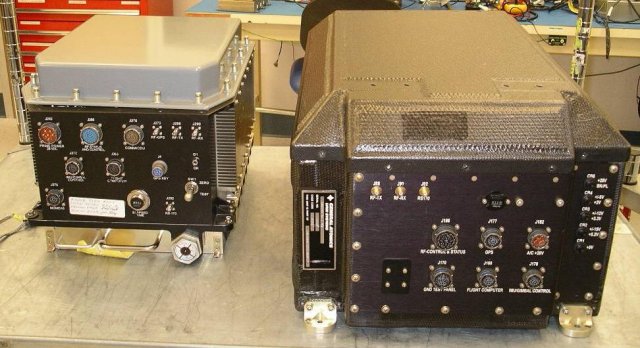General Atomics Aeronautical Systems, Inc. has announced that its Lynx Multi-mode Radar success- fully demonstrated the ability to support maritime operations in a littoral environment during the recent U.S. Navy Exercise Spearhead IIA held off the coast of Key West, Fla., in June.
Integrated aboard a Predator B/MQ-9 Reaper surrogate (King Air 350), Lynx’s Synthetic Aperture Radar (SAR) and Maritime Wide-Area Search (MWAS) modes detected mine-like-objects and very small vessels, including fast boats, sailboats, and fishing boats. Concurrently, the King Air 350 data linked the Lynx and video data via the onboard L-3 Mini-T data link system to the Navy’s Intelligence Carry-On Program (ICOP) data link system installed on the JHSV (Joint High Speed Vessel), with the ICOP system employing L-3’s VideoScout-CM2 video exploitation and management system.
“GA-ASI’s main goal in supporting this exercise was to provide the ICOP system onboard the JHSV and deliver near-real-time, all-weather, day/night Lynx radar and EO/IR [Electro-optical/Infrared] imagery on high-interest maritime targets,” said Claudio Pereida, executive vice president, Mission Systems, GA-ASI. “We achieved several historical firsts, with the MQ-9 surrogate providing the ICOP system with tactical Lynx Radar maritime data, demonstrating Reaper’s continued operational relevancy via new Lynx capabilities, and successfully leveraging Reaper in support of the Air-Sea Battle Concept.”
During the exercise, GA-ASI’s Claw sensor payload operation software cross-cued the Lynx imagery to the EO/IR sensor for visual target identification. The Lynx target data also was used to cross-cue other platform sensors used in Spearhead IIA. GA-ASI plans to continue integration and test coordination efforts to enhance surface vessels and shore C2 nodes receiving and conducting data exploitation capabilities of Lynx SAR and Moving Target Indicator (MTI) data further.
The Lynx Multi-mode Radar, upgraded to the two-channel Lynx Block 20A and in production, is capable of high-resolution video dismount detection and a 30-degree-per-second scan rate with algorithms optimized for detecting small vessels, including Self-Propelled Semi-Submersible (SPSS) vessels. The Lynx MWAS and Dismount Moving Target Indicator (DMTI) capabilities, along with a three-fold increase in the Ground Moving Target Indicator (GMTI) area coverage rate and a new SAR-aided alignment mode, have been incorporated into Lynx radars and are being deployed by U.S. customers.
The JHSV Experiment Campaign plan was directed by the Chief of Naval Operations (CNO) through U.S. Fleet Forces Command in an effort to evaluate new missions that could be supported by the JHSV, with an initial focus on options that involve little or no modification to the existing sea frame. In addition, the plan will inform the development of JHSV’s Concept of Operations (CONOPs) and assess how well the vessel could support other naval mission sets. The ICOP system onboard Navy vessels and now the JHSV offers a tremendous leap forward in providing an intelligence picture of the battlespace in terms of imagery processing, exploitation, and dissemination.
Source: Press Release

